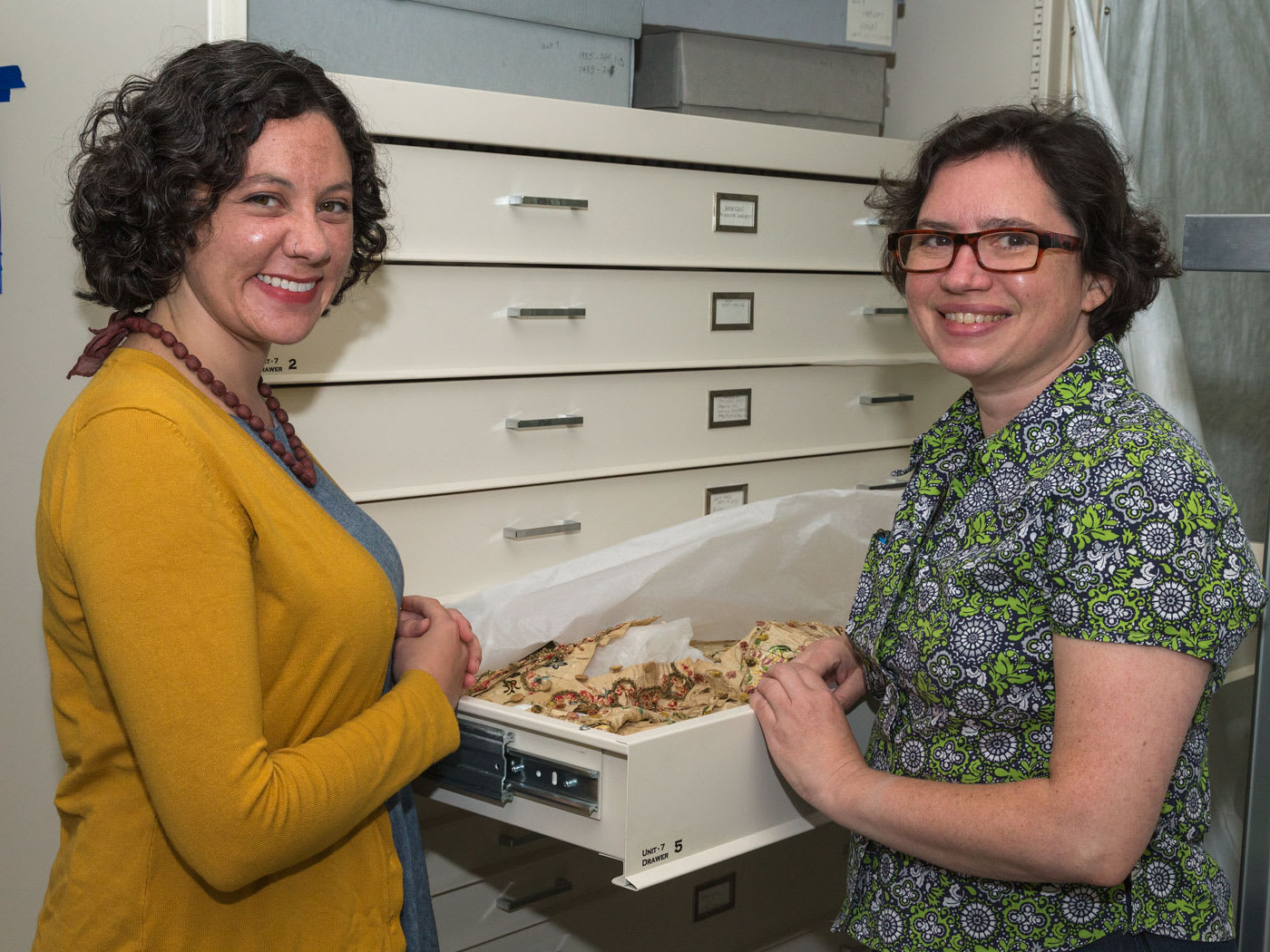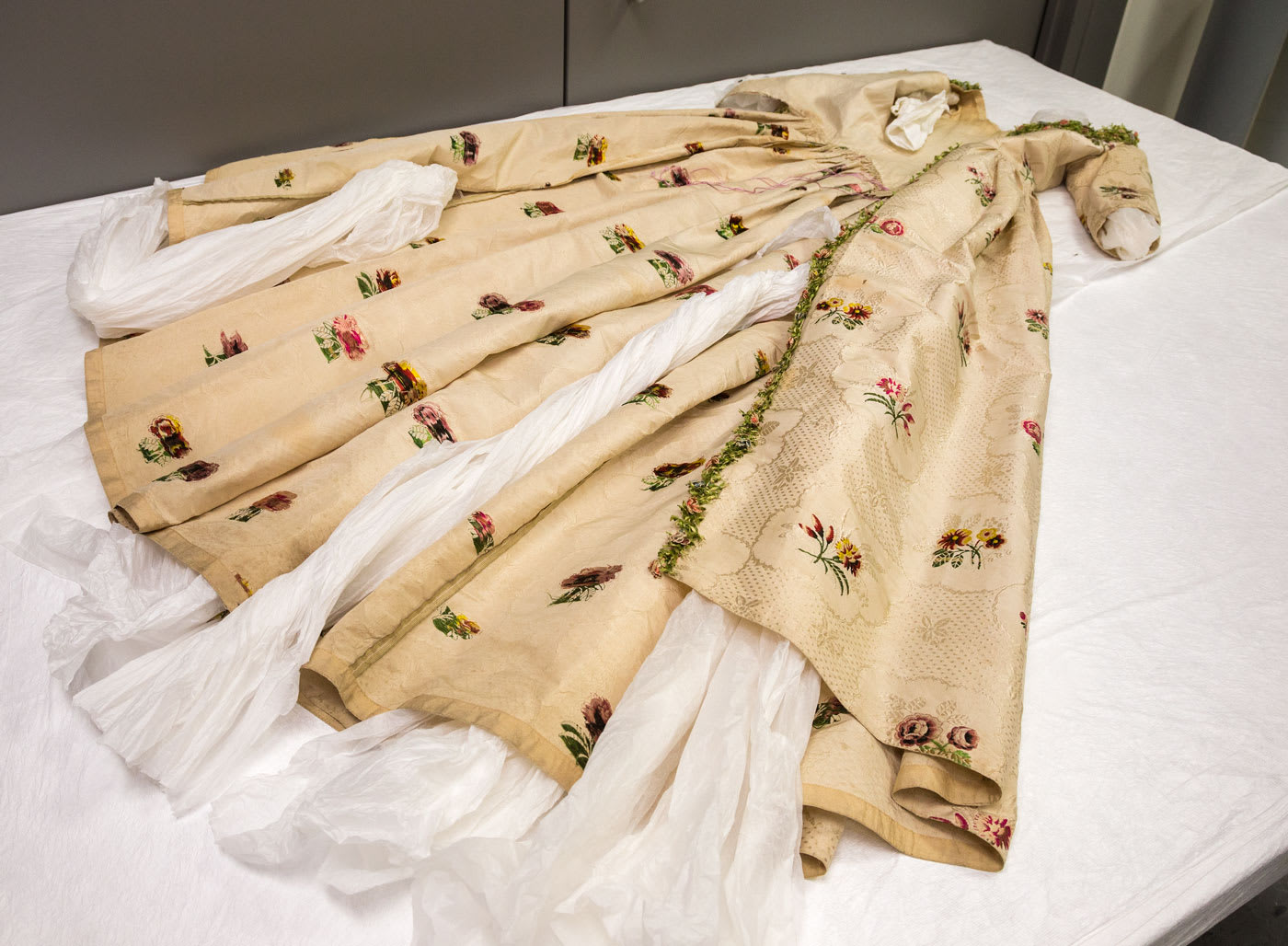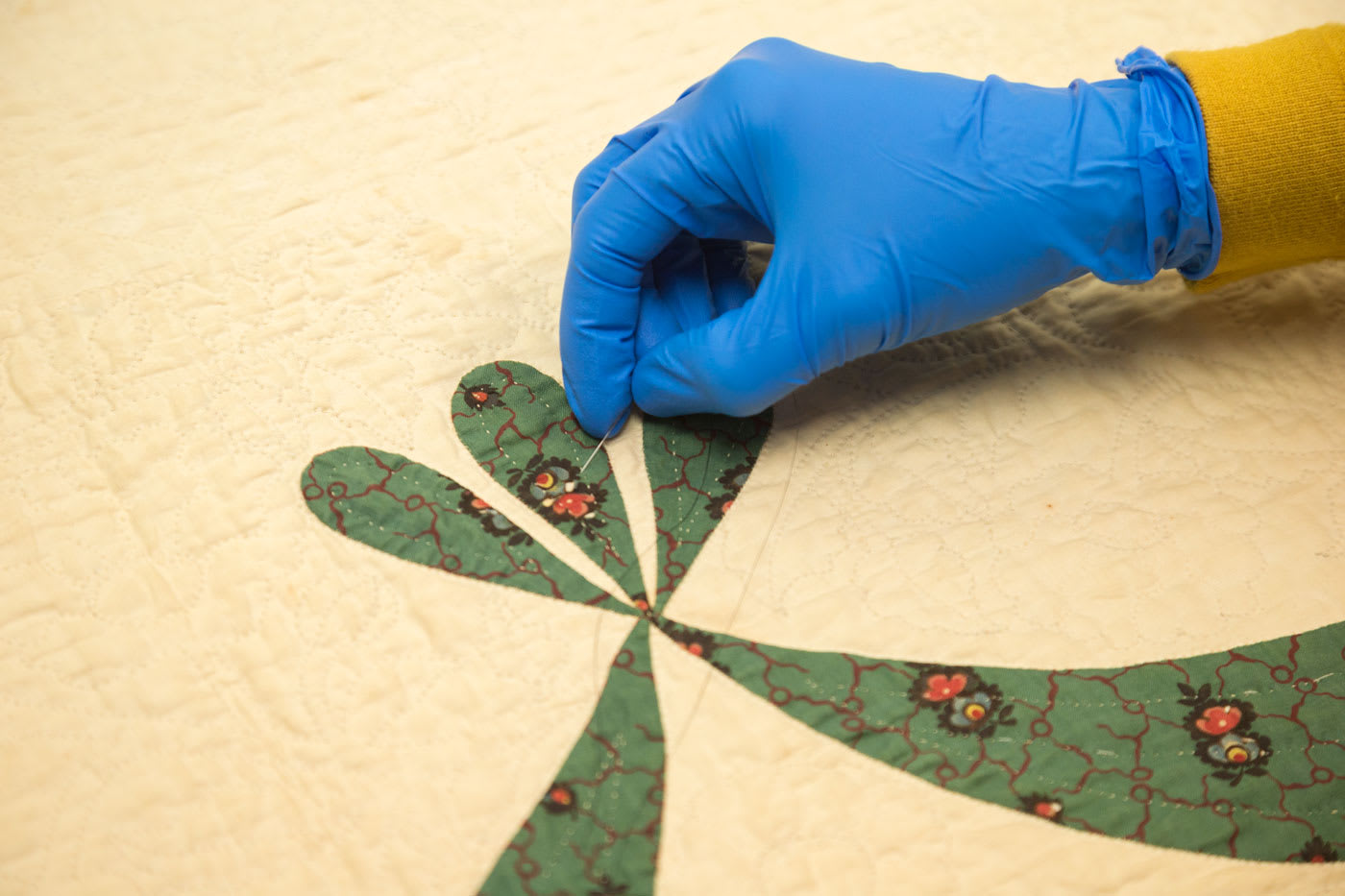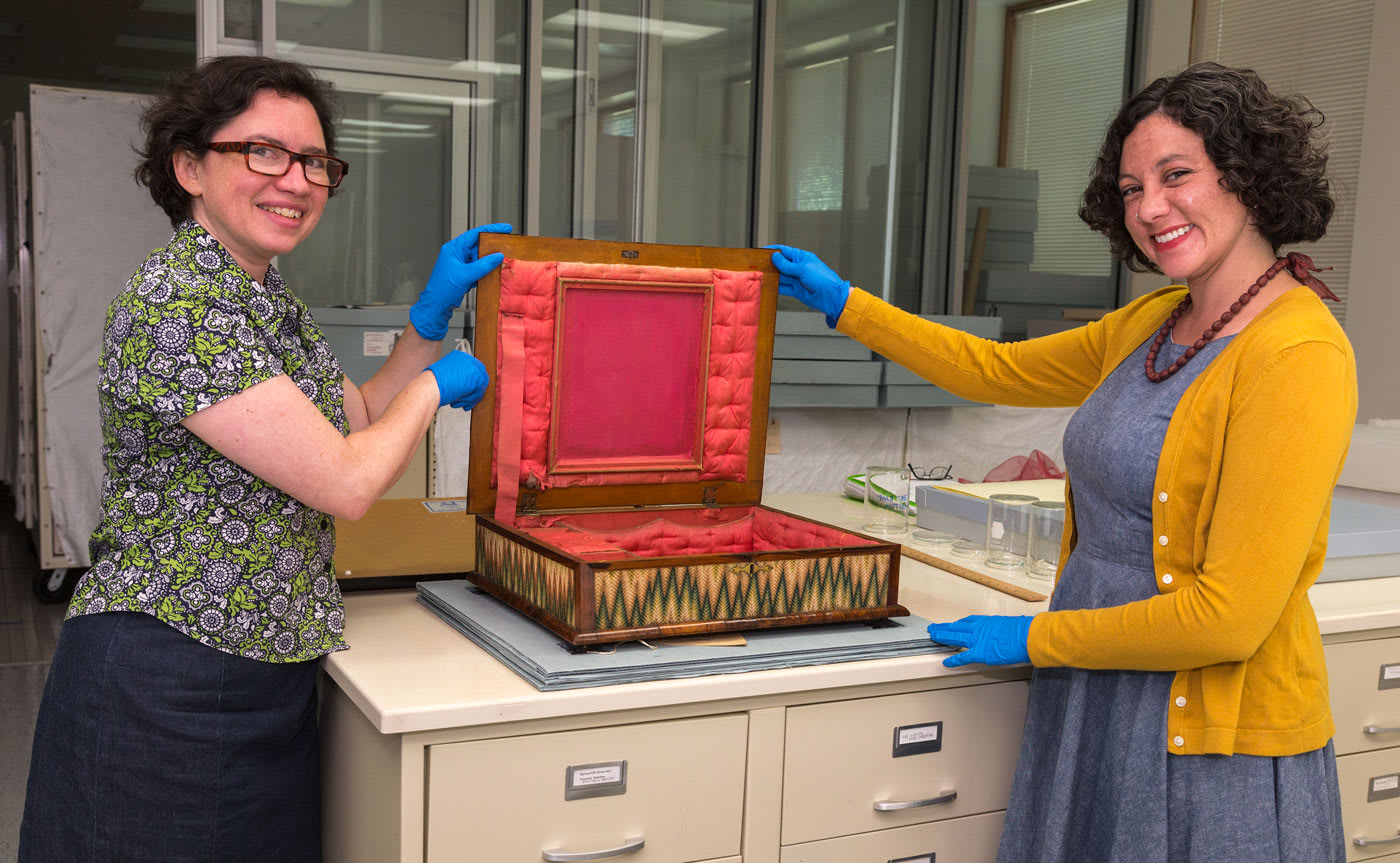A behind-the-scenes look at the conservation of the textiles collection
In a brightly lit lab on the first floor of the Collections Building in the Bruton Heights complex, conservators Gretchen Guidess and Jacquelyn Peterson-Grace balance preservation with esthetics, all while performing intricate work that is necessary but nearly imperceptible to most observers.

Most guests and employees don’t see the tasks the conservation team performs to restore and prepare textiles for public view, but their work is on display from the Historic Area to the Art Museums of Colonial Williamsburg.
Fabric is so intertwined in daily life that it may be taken for granted, but clothing, linens for bed and table, window treatments and the upholstery of furniture reveal much about life in Colonial America.
The team provides treatment for pieces to preserve and restore them when time, light and handling may have caused them to degrade.
Peterson-Grace, who is working at the Foundation on a post-graduate fellowship, carefully smooths her gloved hands over the fabric of a child’s gown on a table. The garment has been altered, she said, probably by more than one seamstress, judging by the difference in stitching and hemming in different areas. The dress has been cut apart and opened at the bodice, perhaps to accommodate a young girl’s changing figure. “There’s a story here,” Peterson-Grace said. “Clothing was valued and maintained and would have been altered rather than discarded.”

A recent example of their work was a Circa 1850 Quilt from Chester, Pennsylvania, now on view in America’s Folk Art in the Abby Aldrich Rockefeller Folk Art Museum. The exhibition was generously funded by Don and Elaine Bogus. Some very small areas needed treatment because the dye’s interaction with the cotton fabric had created small holes. Peterson-Grace painstakingly added tiny bits of sheer polyester fabric overlay on those spots, unobtrusively restoring the integrity of the piece. Using this delicate overlay to repair the trouble spots allows the original material to be visible even as the damage becomes nearly undetectable. Other areas were repaired with even more fragile bits of reinforced tissue.


This close, careful work prepared the piece for display in the Art Museums of Colonial Williamsburg. Items in our collection are displayed on rotation to make sure more items may be viewed and also to allow time for preservation and to prevent damage from overexposure. Soon, with the expansion of the art museums, more works will be able to be displayed at once, increasing the call volume of works moving through the conservators’ labs.
Their work is one stage in a multi-step process that involves a group of highly skilled employees. Guidess, a conservator of textiles, and Peterson-Grace prepare the physical textile piece for exhibit, while curators worked on the text of any signage or other displayed information about its provenance, the techniques used in its creation and its historical significance. An exhibitions team determines the physical placement and lighting for the object’s display, and docents and education staff collect the information they will share with visitors who view the exhibit.
It is especially rewarding when a display is mounted. “It’s the culmination of all of our activity and the dialogue between curators, conservators, and the exhibitions teams,” Guidess said.
One item being prepared for the Textile Arts of Britain exhibition in the DeWitt Wallace Decorative Arts Museum next summer is a wooden box decorated with flamestitch embroidery on its exterior and a plush upholstered lining of pink silk. The brilliant pink, produced by a safflower dye, is extremely sensitive to light and could fade considerably while on display. “But,” Guidess said, “items in the collection should be seen; that’s the point of the collection.”

It is important to appreciate its vibrant color during the brief period when it will be on display. “Our aim is not to make it new but to stabilize the piece and prevent additional degradation,” Peterson-Grace said. “The fact that it will look better as a result of our treatment is a bonus.”
So, the box which may have been used for jewelry or keepsakes and it is likely that it once sported a mirror in its lid, will be on view for about a one year rotation beginning in summer 2020. Intriguingly, the box harbors a secret compartment where treasures were once hidden.
Exhibits are planned about three years in advance and take considerable time to prepare. For textiles, physical constraints of the conservators themselves must be considered in that scheduling. “A conservator can’t do hand sewing for long hours on end,” Guidess said. “Project management is critical in scheduling the work to prepare pieces for display. Once the exhibit schedules are announced, those deadlines are firm.”
Learn More
Related Events
-
Presentation: Good Stories about Great Stuff
Join a curator, conservator, educator, archaeologist, or historian to discover who created an object, who owned it, and how it ended up in the Colonial Williamsburg Collection.
Open to the Public
-
Tour: Museum Highlights
Discover highlights from Colonial Williamsburg’s diverse collections during a guided tour.
Open to the Public
-
Tour: Favorite Family Pets
Join us on a family-friendly tour as we explore the galleries for animals of all shapes and sizes.
Open to the Public
